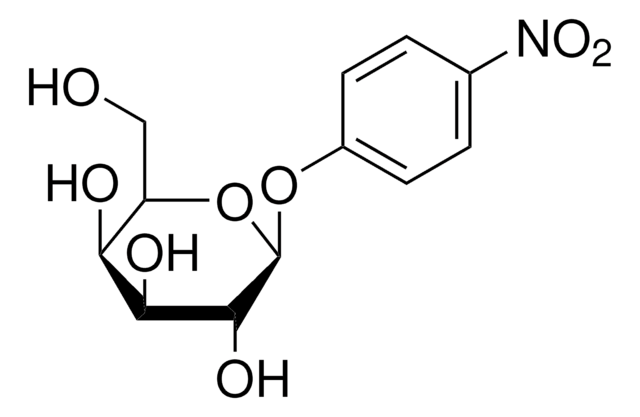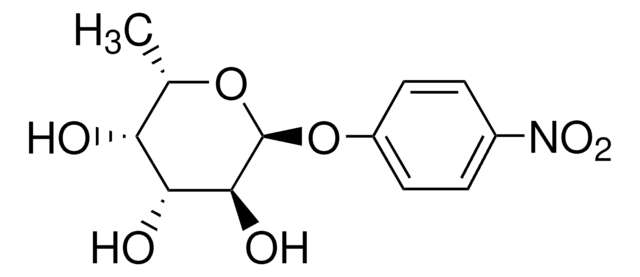N1752
4-Nitrophenyl β-D-lactopyranoside
powder
Synonyme(s) :
4-Nitrophenyl beta-D-lactopyranoside, p-Nitrophenyl-beta-D-lactopyranoside
About This Item
Produits recommandés
Pureté
≥99% (TLC)
Niveau de qualité
Forme
powder
Couleur
white
Solubilité
water: 19.60-20.40 mg/mL, clear to slightly hazy, colorless to yellow
Température de stockage
−20°C
Chaîne SMILES
OCC1OC(OC2C(O)C(O)C(OC2CO)Oc3ccc(cc3)N(=O)=O)C(O)C(O)C1O
InChI
1S/C18H25NO13/c20-5-9-11(22)12(23)14(25)18(30-9)32-16-10(6-21)31-17(15(26)13(16)24)29-8-3-1-7(2-4-8)19(27)28/h1-4,9-18,20-26H,5-6H2
Clé InChI
IAYJZWFYUSNIPN-UHFFFAOYSA-N
Catégories apparentées
Application
Mention d'avertissement
Danger
Mentions de danger
Conseils de prudence
Classification des risques
Repr. 1B
Code de la classe de stockage
6.1C - Combustible acute toxic Cat.3 / toxic compounds or compounds which causing chronic effects
Classe de danger pour l'eau (WGK)
WGK 3
Point d'éclair (°F)
Not applicable
Point d'éclair (°C)
Not applicable
Certificats d'analyse (COA)
Recherchez un Certificats d'analyse (COA) en saisissant le numéro de lot du produit. Les numéros de lot figurent sur l'étiquette du produit après les mots "Lot" ou "Batch".
Déjà en possession de ce produit ?
Retrouvez la documentation relative aux produits que vous avez récemment achetés dans la Bibliothèque de documents.
Les clients ont également consulté
Notre équipe de scientifiques dispose d'une expérience dans tous les secteurs de la recherche, notamment en sciences de la vie, science des matériaux, synthèse chimique, chromatographie, analyse et dans de nombreux autres domaines..
Contacter notre Service technique











